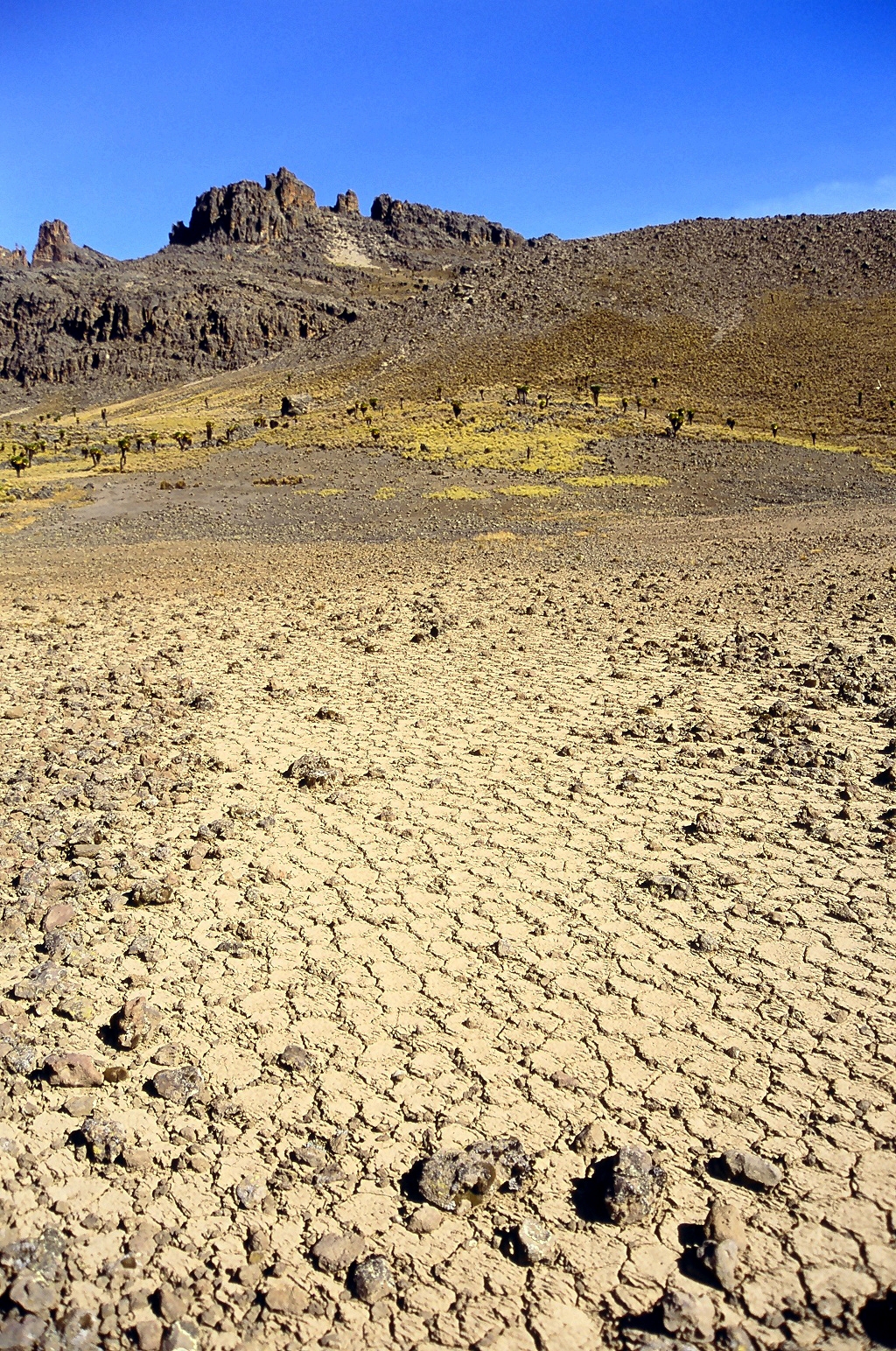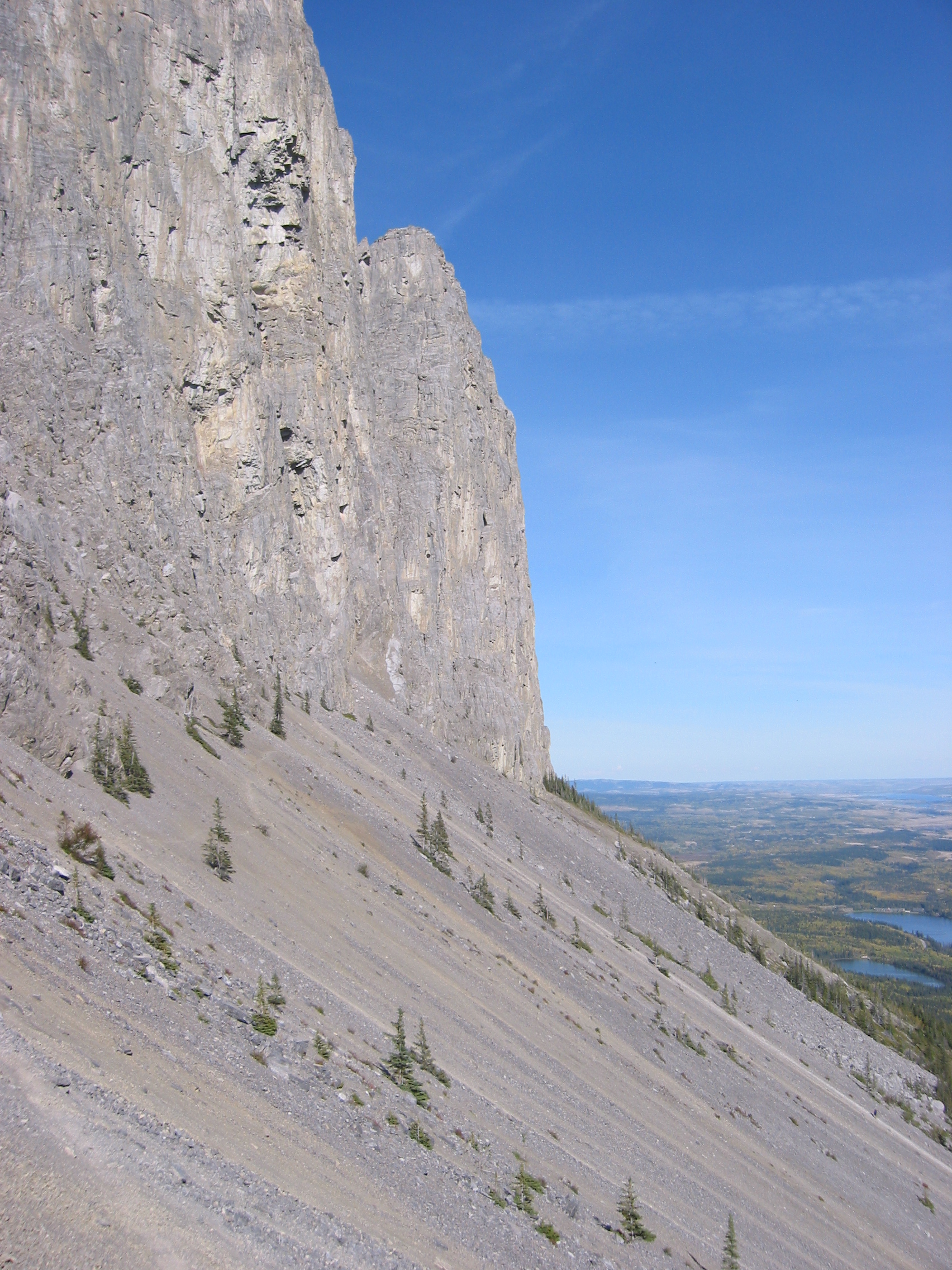|
Blockfield
A blockfieldWhittow, John (1984). ''Dictionary of Physical Geography''. London: Penguin, 1984, pp. 66 and 190. . (also spelt block fieldLeser, Hartmut, ed. (2005). ''Wörterbuch Allgemeine Geographie'', 13th ed., dtv, Munich, pp. 107 and 221. . ), felsenmeer, boulder field or stone field is a surface covered by boulder- or block-sized rocks usually associated with a history of volcanic activity, alpine and subpolar climates and periglaciation. Blockfields differ from screes and talus slope in that blockfields do not apparently originate from mass wastings. They are believed to be formed by frost weathering below the surface. An alternative theory that modern blockfields may have originated from chemical weathering that occurred in the Neogene when the climate was relatively warmer. Following this thought the blockfields would then have been reworked by periglacial action. Most known blockfields are located in the northern hemisphere. Examples can be found in Abisko National ... [...More Info...] [...Related Items...] OR: [Wikipedia] [Google] [Baidu] |
Kalmit Felsenmeer
The Kalmit is the highest peak in the Palatinate Forest and the second highest (after the Donnersberg) in the Palatinate region of Germany. It is and located south of the town of Neustadt an der Weinstraße. The mountain attracts many tourists thanks to the numerous footpaths leading to its summit, its mountaintop restaurant, extensive views over the Palatinate (wine region), Palatinate wine region and striking rock formations on its forest-clad mountainsides. Geography Location The mountain lies within the municipal forest of the wine village of Maikammer and southwest of the independent town of Neustadt an der Weinstraße. Several lower peaks are grouped around the main summit, including the Zwergberg (589.3 m) to the north, the Taubenkopf (Haardt), Taubenkopf (603.8 m) to the northeast, the Kanzel (531.7 m) and the Wetterkreuzberg (400.7 m) to the southeast, the Breitenberg (Haardt), Breitenberg (545.2 m) to the south and the Hüttenberg (591.2& ... [...More Info...] [...Related Items...] OR: [Wikipedia] [Google] [Baidu] |
Periglaciation
Periglaciation (adjective: "periglacial", referring to places at the edges of glacial areas) describes geomorphic processes that result from seasonal thawing and freezing, very often in areas of permafrost. The meltwater may refreeze in ice wedges and other structures. "Periglacial" originally suggested an environment located on the margin of past glaciers. However, freeze and thaw cycles influence landscapes also outside areas of past glaciation. Therefore, periglacial environments are anywhere when freezing and thawing modify the landscape in a significant manner. History Periglaciation became a distinct subject within the study of geology after Walery Łoziński, a Polish geologist, introduced the term in 1909. Łoziński drew upon the early work of Johan Gunnar Andersson. According to Alfred Jahn, his introduction of his work at the 1910 International Geological Congress held in Stockholm caused significant discussion. In the field trip to Svalbard that followed the congres ... [...More Info...] [...Related Items...] OR: [Wikipedia] [Google] [Baidu] |
Permafrost And Periglacial Processes
''Permafrost and Periglacial Processes'' is a quarterly peer-reviewed scientific journal covering research on permafrost and periglacial geomorphology. It covers the subject from various points of views including engineering, hydrology, process geomorphology, and quaternary geology. It is the official journal of the International Permafrost Association and is published by John Wiley & Sons. The editor-in-chief is Mauro Guglielmin (Insubria University, Italy). According to the ''Journal Citation Reports'', the journal has a 2020 impact factor of 4.368. See also *''Biuletyn Peryglacjalny ''Biuletyn Peryglacjalny'' was a scientific journal covering research on periglacial geomorphology. It was established in 1954 in Łódź by Polish geomorphologist Jan Dylik, who was its editor-in-chief An editor-in-chief (EIC), also known as le ...'' References External links * Arctic research Earth and atmospheric sciences journals Geomorphology journals Soil science Academic journal ... [...More Info...] [...Related Items...] OR: [Wikipedia] [Google] [Baidu] |
Imbrication (sedimentology)
In sedimentology, imbrication is a primary depositional Fabric (geology), fabric consisting of a preferred orientation of clasts such that they overlap one another in a consistent fashion, rather like a run of toppled dominoes. Imbrication is observed in Conglomerate (geology), conglomerates and in some volcaniclastic deposits. Types : In conglomerates the shape of many clasts can be approximated to an ellipsoid, with a long axis (A), an intermediate axis (B) and a short axis (C). * ''A-axis imbrication'' where the long axes of the clasts are oriented parallel to the flow direction. This fabric is characteristic of clasts carried in suspension and this is only preserved in the case of a fast-waning flow in which the clasts are deposited without any significant rolling. This fabric is typical of conglomerates at the base of turbidite beds but is also occasionally observed in alluvial fan deposits reworked by flash floods * ''AB-plane imbrication'' where the long axes of the clast ... [...More Info...] [...Related Items...] OR: [Wikipedia] [Google] [Baidu] |
Geografiska Annaler
''Geografiska Annaler'' is a scientific journal published by the Swedish Society for Anthropology and Geography in Stockholm, Sweden. The journal is founded in 1919. Since 1965 the journal is published in two series A and B. Series A deals with arctic research, physical geography, glaciology and quaternary science in general. Series B covers the topics of human geography Human geography or anthropogeography is the branch of geography which studies spatial relationships between human communities, cultures, economies, and their interactions with the environment, examples of which include urban sprawl and urban ... and economic geography, with a special, but not exclusive, focus on the Nordic and Baltic countries. References 1919 establishments in Sweden Geography journals Geology journals Glaciology journals Quaternary science journals Magazines published in Stockholm Academic journals established in 1919 Quarterly journals {{sweden-mag-stub ... [...More Info...] [...Related Items...] OR: [Wikipedia] [Google] [Baidu] |
Scree
Scree is a collection of broken rock fragments at the base of a cliff or other steep rocky mass that has accumulated through periodic rockfall. Landforms associated with these materials are often called talus deposits. The term ''scree'' is applied both to an unstable steep mountain slope composed of rock fragments and other debris, and to the mixture of rock fragments and debris itself. It is loosely synonymous with talus, material that accumulates at the base of a projecting mass of rock, or talus slope, a landform composed of talus. The term ''scree'' is sometimes used more broadly for any sheet of loose rock fragments mantling a slope, while ''talus'' is used more narrowly for material that accumulates at the base of a cliff or other rocky slope from which it has obviously eroded. Scree is formed by rockfall, which distinguishes it from colluvium. Colluvium is rock fragments or soil deposited by rainwash, sheetwash, or slow downhill creep, usually at the base of gentle ... [...More Info...] [...Related Items...] OR: [Wikipedia] [Google] [Baidu] |
Freeze-thaw
Frost weathering is a collective term for several mechanical weathering processes induced by stresses created by the freezing of water into ice. The term serves as an umbrella term for a variety of processes, such as frost shattering, frost wedging, and cryofracturing. The process may act on a wide range of spatial and temporal scales, from minutes to years and from dislodging mineral grains to fracturing boulders. It is most pronounced in high-altitude and high-latitude areas and is especially associated with alpine, periglacial, subpolar maritime, and polar climates, but may occur anywhere at sub- freezing temperatures (between ) if water is present. Ice segregation Certain frost-susceptible soils expand or heave upon freezing as a result of water migrating via capillary action to grow ice lenses near the freezing front. This same phenomenon occurs within pore spaces of rocks. The ice accumulations grow larger as they attract liquid water from the surrounding pores. ... [...More Info...] [...Related Items...] OR: [Wikipedia] [Google] [Baidu] |
Landform
A landform is a land feature on the solid surface of the Earth or other planetary body. They may be natural or may be anthropogenic (caused or influenced by human activity). Landforms together make up a given terrain, and their arrangement in the landscape is known as topography. Landforms include hills, mountains, canyons, and valleys, as well as shoreline features such as bays, peninsulas, and seas, including submerged features such as mid-ocean ridges, volcanoes, and the great oceanic basins. Physical characteristics Landforms are categorized by characteristic physical attributes such as elevation, slope, orientation, structure stratification, rock exposure, and soil type. Gross physical features or landforms include intuitive elements such as berms, cliffs, hills, mounds, peninsulas, ridges, rivers, valleys, volcanoes, and numerous other structural and size-scaled (e.g. ponds vs. lakes, hills vs. mountains) elements including various kinds of inland ... [...More Info...] [...Related Items...] OR: [Wikipedia] [Google] [Baidu] |
United States
The United States of America (USA), also known as the United States (U.S.) or America, is a country primarily located in North America. It is a federal republic of 50 U.S. state, states and a federal capital district, Washington, D.C. The 48 contiguous states border Canada to the north and Mexico to the south, with the semi-exclave of Alaska in the northwest and the archipelago of Hawaii in the Pacific Ocean. The United States asserts sovereignty over five Territories of the United States, major island territories and United States Minor Outlying Islands, various uninhabited islands in Oceania and the Caribbean. It is a megadiverse country, with the world's List of countries and dependencies by area, third-largest land area and List of countries and dependencies by population, third-largest population, exceeding 340 million. Its three Metropolitan statistical areas by population, largest metropolitan areas are New York metropolitan area, New York, Greater Los Angeles, Los Angel ... [...More Info...] [...Related Items...] OR: [Wikipedia] [Google] [Baidu] |
Appalachian Mountains
The Appalachian Mountains, often called the Appalachians, are a mountain range in eastern to northeastern North America. The term "Appalachian" refers to several different regions associated with the mountain range, and its surrounding terrain. The general definition used is one followed by the United States Geological Survey and the Geological Survey of Canada to describe the respective countries' Physiographic region, physiographic regions. The U.S. uses the term Appalachian Highlands and Canada uses the term Appalachian Uplands; the Appalachian Mountains are not synonymous with the Appalachian Plateau, which is one of the provinces of the Appalachian Highlands. The Appalachian range runs from the Newfoundland (island), Island of Newfoundland in Canada, southwestward to Central Alabama in the United States; south of Newfoundland, it crosses the 96-square-mile (248.6 km2) archipelago of Saint Pierre and Miquelon, an overseas collectivity of France, meaning it is technica ... [...More Info...] [...Related Items...] OR: [Wikipedia] [Google] [Baidu] |
Hawk Mountain
Hawk Mountain is a mountain ridge, part of the Blue Mountain Ridge in the Appalachian Mountain chain, located in central-eastern Pennsylvania near Reading and Allentown. The area includes of protected private and public land, including the Hawk Mountain Sanctuary. The River of Rocks is visible and accessible from the Sanctuary. The boulders were formed by periglacial processes in the Pleistocene epoch, or "ice age". History The mountain was previously called North Mountain because it is across the Lehigh Valley from South Mountain. In 1929, the Pennsylvania Game Commission offered hunters $5 for every goshawk shot during migrating season, as the birds were considered pests. In 1932, Richard Pough (a birder and photographer from Philadelphia) photographed hundreds of killed hawks and published these photos in ''Bird Lore'', the predecessor to ''Audubon''. In 1934, after decades of hawk and eagle slaughter on the ridge, Rosalie Edge unilaterally ended the annual shoot b ... [...More Info...] [...Related Items...] OR: [Wikipedia] [Google] [Baidu] |



